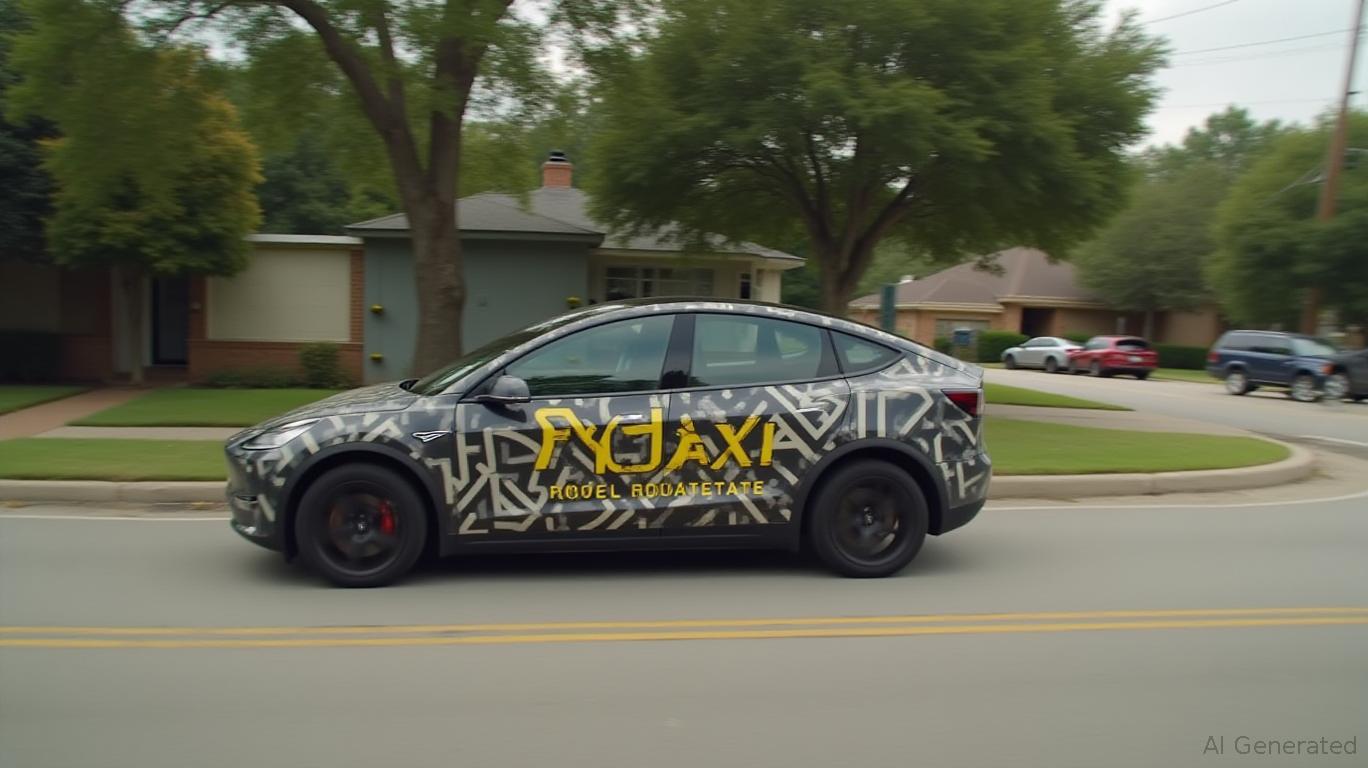Tesla's Robotaxi Launch: A Pioneering Step Toward Autonomous Dominance
Tesla's planned June 22 launch of its Robotaxi service in Austin, Texas, and its June 28 factory-to-door vehicle delivery milestone mark a critical inflection point for the company's autonomous driving ambitions. These events, while modest in scale, underscore Tesla's technological leadership, its deft regulatory strategy, and its potential to capitalize on the $8 trillion global mobility market. While risks such as safety delays and competition loom, the data-driven advantages of Tesla's Full Self-Driving (FSD) software and its vertically integrated business model position it to dominate a sector still in its infancy.
Technological Leadership: FSD's Data Advantage
Tesla's Robotaxi rollout hinges on its FSD v12 software, which Musk describes as an “unsupervised” system capable of navigating complex urban environments without human intervention. The June 28 factory-to-door delivery—a first in automotive history—will showcase this software's maturity. A fleet of 10–20

The software's prowess stems from Tesla's vast data trove, generated by over 1.6 million vehicles equipped with its Autopilot sensors. This data advantage, combined with its proprietary neural network training infrastructure, allows Tesla to refine FSD faster than rivals like Waymo or Cruise, which rely on smaller test fleets. While competitors emphasize sensor-heavy Level 4 autonomy, Tesla's approach—using cameras and AI to mimic human drivers—could prove more scalable.
Regulatory Strategy: Austin as a Sandbox for Innovation
Tesla's choice of Texas as its launch site is no accident. Texas's lax regulations on autonomous vehicles—unlike those in California or the EU—allow Tesla to deploy its Robotaxis without requiring safety drivers or geofencing beyond a few square miles. This regulatory flexibility lets Tesla test at scale while avoiding the costly compliance hurdles faced by firms in more stringent jurisdictions.
The June 22 launch will initially operate in a tightly controlled environment, with Tesla employees monitoring vehicles remotely. Over time, Musk has hinted, the system will expand geographically as it learns from real-world data. This strategy mirrors Tesla's broader ethos: iterate quickly, validate safety, and scale cautiously.
Competitors like Waymo and Zoox, already present in Austin, face an uphill battle. Tesla's direct-to-consumer sales model and existing Supercharger network provide a logistical backbone that others lack. Meanwhile, the Cybercab—a steering-wheel-free, purpose-built robotaxi set for production before 2027—adds another layer of differentiation.
Market Scalability: A $8 Trillion Prize
The global mobility-as-a-service (MaaS) market is projected to reach $8.5 trillion by 2030. Tesla's Robotaxi service, if successful, could carve out a significant slice of this pie. Its vertically integrated model—owning the vehicles, software, and charging infrastructure—gives it an edge over software-focused rivals reliant on partnerships with automakers.
The June 28 factory-to-door delivery is a harbinger of this vision. By eliminating traditional logistics (e.g., trucks, dealerships), Tesla could reduce costs, improve customer satisfaction, and create a data feedback loop to refine its autonomous systems. Over time, such capabilities could extend to delivering goods or enabling subscription-based ownership models, further monetizing its software stack.
Risks and Challenges
Skeptics point to Tesla's history of missing production targets and regulatory scrutiny. The June 22 launch date, Musk warns, is “subject to safety,” and delays could dent investor confidence. Waymo's head start in autonomous ride-hailing and its partnerships with automakers like Jaguar also pose threats.
Safety remains the paramount concern. While Tesla's geofenced trials in Austin have shown promise—vehicles paused at intersections to let pedestrians cross—real-world conditions could expose vulnerabilities. Legal liability in the event of an accident remains untested, and stricter regulations elsewhere could limit expansion.
Investment Analysis: A Buy with 12-Month Target of $400
Tesla's Robotaxi and factory-to-door milestones are catalysts for re-rating its valuation. The company's FSD software is now a standalone asset, with potential monetization through subscription services or partnerships. Its Austin factory's proximity to key tech hubs and its regulatory flexibility further amplify its growth prospects.
Tesla's stock (TSLA) currently trades at $280, well below our $400 target. This reflects skepticism around its autonomous timeline. However, the June events could validate FSD's capabilities, driving investor confidence. A 12-month price target of $400 assumes a 43% upside, factoring in FSD's $20 billion annual revenue potential by 2027 and Tesla's cost leadership.
Conclusion
Tesla's June launches are not merely incremental milestones but foundational steps toward autonomous dominance. While risks exist, the combination of its data advantage, regulatory agility, and scalable business model positions it to lead the mobility revolution. For investors, the near-term catalysts and long-term upside justify a buy rating. The race to $400—and beyond—begins now.

Comments
No comments yet